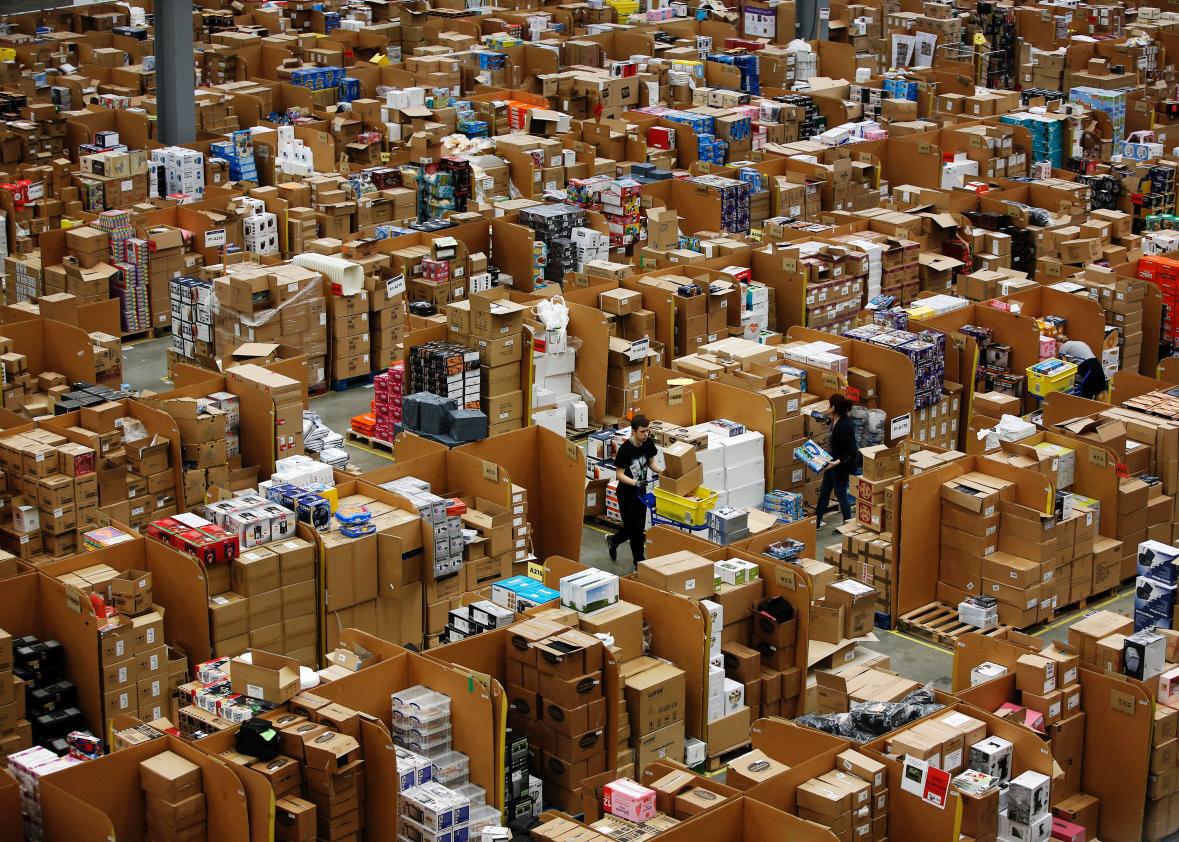Today is Amazon Prime Day, a new corporate holiday in the American calendar. When the e-commerce giant introduced Prime Day last summer, on the occasion of its 20th anniversary, the one-day sale produced the company’s busiest day ever.
On Prime Day, Amazon brings the deals. But, as I learned when I spent the morning browsing through hundreds of the thousands of deals, the online shopping bonanza also magnifies the pressures that accompany any visit to the Everything Store.
Prime Day is less a remedy to Black Friday than a digital iteration of its chaos. It’s quieter—click, click, click—but no calmer. Instead, it compresses all the anxiety, urgency, competition, panic, and doubt of brick-and-mortar retail’s big day into your computer screen. If Black Friday is a physical challenge, Prime Day is a mad riddle.
The way Amazon is displaying its deals is much more complex than what buyers typically see in stores or on the site. The company’s old system of list prices and sale prices, with a percentage marker showing the change between the former and the latter, has been supplemented by an endless buffet of additional options.
Some products conform to that old system (though, as any savvy shopper will know, you shouldn’t trust a list price). Others show a price, a teal PRIME DAY DEAL tag, and a lower check-out price. Countless products have a PRIME DAY DEAL tag that promises 30 percent off at checkout, but doesn’t display the lower price on the product page. You have to proceed to checkout to see your discount materialize and view the new price.

Screenshots via Amazon.com
Things grow more complex in each department, where a series of bespoke deals—$25 off your first Amazon Fresh order, 50 percent off eggs and Eggo waffles (limit of three of each item per customer)—are available. Hundreds of items in Amazon Fashion, for example, are 30 percent off at check-out—but until you’re checking out, you’ll have to do the savings calculation yourself. On Prime Day, shipping is free for Amazon Pantry orders over $60, and you get a free tote bag.
Do I need a Squatty Potty? Is there someone in my life who would like a hand-cranked laundry machine?
Hundreds of other products have deals that are both time-sensitive and limited in quantity. This afternoon, a set of dummy security cameras was going for $19.99, 20 percent off the list price. The deal was 45 percent claimed with 90 minutes left. But the deal for a refractor telescope, 32 percent off at $79.99, was 76 percent claimed with three and a half hours remaining. Would a telescope bring me joy?
Can I check out and get back to work now? No. Deals are ending and beginning all through the day, like matches on the first days of the U.S. Open.
This byzantine pricing and selling system is many things: a clearance sale; a promotion of Amazon Prime, company products, and services; a method of A/B testing for what pricing scenarios lead to purchases. But it also represents Amazon’s gradual emancipation from the broader retail economy.
The New York Times reported earlier this month that Amazon is moving toward abandoning list prices, which sometimes gave buyers the false impression they were getting a deal—but did at least foster the illusion that Amazon was competing with the rest of the marketplace.
The impression I get from Prime Day is one of an Amazon that has gone further down that path, where comparisons to what things cost beyond Amazon are no longer relevant or even possible, because the price of everything you buy from the company only exists in the context of all the other things you buy from the company. Free-shipping delivery bundles, grocery services, Amazon Prime, Amazon-brand devices like the Kindle, Echo, and Fire—together, these offerings create an entire ecosystem where no Squatty Potty deal can be appraised in isolation.
Believe me, I tried.
